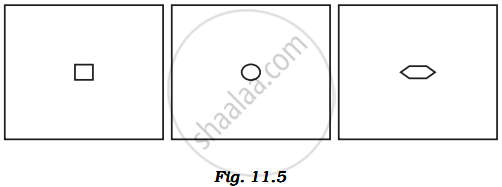Advertisements
Advertisements
प्रश्न
What are the difference between luminous and non-luminous objects? Give two examples of each.
उत्तर
| Sr. No. | Luminous objects | Non-luminous objects |
| 1. | All objects which emit light energy by themselves are called luminous objects. | All objects which do not emit light energy of their own, but reflect the light energy falling on them and hence, become visible are called non- luminous object. |
| 2. | Ex.: Sun, stars, torch light, burning candle etc. | Ex.: Metals, trees, houses, stones, moon etc. |
APPEARS IN
संबंधित प्रश्न
What are luminous objects?
Is the moon a luminous object?
Classify the objects or materials given below as opaque, transparent or translucent and luminous or non-luminous:
Air, water, a piece of rock, a sheet of aluminium, a mirror, a wooden board, a sheet of polythene, a CD, smoke, a sheet of plane glass, fog, a piece of red hot iron, an umbrella, a lighted fluorescent tube, a wall, a sheet of carbon paper, the flame of a gas burner, a sheet of cardboard, a lighted torch, a sheet of cellophane, a wire mesh, kerosene stove, sun, firefly, moon.
You have 3 opaque strips with very small holes of different shapes as shown in Fig. 11.5. If you obtain an image of the sun on a wall through these holes, will the image formed by these holes be the same or different?

Is air around us always transparent? Discuss.
